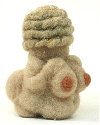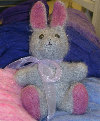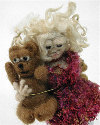EARTH
GUILD
33 Haywood Street
Asheville NC 28801
1-800-327-8448
828-255-7818
fax: 828-255-8593
email us at:
contact@earthguild.com
FELTING: Introduction
|
|

|
The term "felting" describes a wider range of techniques than it used to, but all the variations make use of the special properties of wool (and some other animal) fibers. Wet felting is the matting of wool fibers through a combination of heat, moisture, and agitation which causes the tiny scales or hooks of the fibers to lock together. Very sturdy garments and even dwellings (yurt covers) have been made this way for many centuries. We have fibers, DYED and in their NATURAL colors, suitable for felting (as well as for spinning). Needle felting uses barbed needles to matt fibers together.These needles were originally designed to be used industrially, many together in arrays, to make various felts and batting, such as the stuffing for car seats. Singly or in small sets felting needles can be used for surface design, or to make 3-dimensional pieces. No water or soap is involved, this is dry felting. See FIBERS, YARNS, KITS and BOOKS & TOOLS for NEEDLE FELTING. Knitted, or crocheted felting is a form of wet felting that takes oversized, loosely worked pieces and felts them in to smaller, denser and non-elastic versions of themselves. Most often used for bags and hats. Most wool yarns that are not "Superwash" will felt. See FIBERS and YARNS. All these forms can be and often are combined, for an essentially unlimited set of possibilities. |







